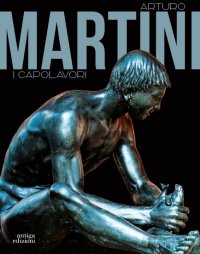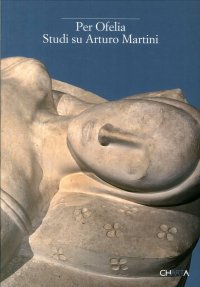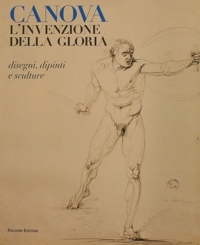Arturo Martini. I capolavori
Treviso, Museo “luigi Bailo”, 31 marzo - 30 luglio 2023.
A cura di Stringa Nico e Fabrizio Malachin.
Cornuda, 2023; br., pp. 278, ill. col., cm 23x29.
prezzo di copertina: € 33.00
|
Libri compresi nell'offerta:
Arturo Martini. I capolavori
Treviso, Museo “luigi Bailo”, 31 marzo - 30 luglio 2023.
A cura di Stringa Nico e Fabrizio Malachin.
Cornuda, 2023; br., pp. 278, ill. col., cm 23x29.
OMAGGIO (prezzo di copertina: € 33.00)
Studi su Arturo Martini. Per Ofelia
A cura di Matteo Ceriana e Claudia Gian Ferrari.
Milano, Atti del Covegno, 19 maggio 2008.
Milano, 2009; br., pp. 136, 97 ill. b/n, cm 17x24.
OMAGGIO (prezzo di copertina: € 29.00)
Canova. L'invenzione della gloria. Disegni, dipinti e sculture.
Genova, Palazzo Reale, 16 aprile - 24 luglio 2016.
A cura di Giuliana Ericani e Franceasco Leone.
Roma, 2016; br., pp. 306, ill. col., tavv. col., cm 23x30.
OMAGGIO (prezzo di copertina: € 35.00)
Controstoria dell'architettura moderna: Roma 1900-1940
Ettore Maria Mazzola
Alinea Editrice
A cura di Mazzola E. M.
Testo Italiano e Inglese.
Firenze, 2005; br., pp. 240, ill. col., cm 17x14.
(Saggi e Documenti di Storia dell'Architettura. 46).
collana: Saggi e Documenti di Storia dell'Architettura
ISBN: 88-8125-876-5 - EAN13: 9788881258765
Soggetto: Saggi (Arte o Architettura),Storia dell'architettura
Periodo: 1800-1960 (XIX-XX) Moderno
Luoghi: Roma
Testo in: 

Peso: 0.46 kg
The history of Architecture and Town Planning in Italy in the period we are dealing with (1900-1940) la unanimously considered that of two schools of thought and linked to the two main Italian cities Conservative Rome and Reactionary Milan. Personally, I would prefer so speak of Rome the artist and artisan and industrial Milan, since this is the level or which the "battle" was fought that led to the demise of Architecture (dominated by architects, artists, and artisans) defeated by building (the domain of industry). The twentieth-century Architecture of Italy had two basic components, therefore; the proEuropean one drawing no rationalism and the nationalistic one, going back to Classicism. In Roma the late-Baroque and the so-called Rationalism are the two faces of architectural renewal. At the beginning of the twentieth century the Roman environment which this study focuses on, was influenced by the cult of the Roman world as well as the studies of Giovannoni on minor seventeenth century Architecture. Bringing together all the buildings of Modern (not Modernist of course!). Rome in a single book is not all that simple, perhaps not even possible, so I would not be so presumptuous as to consider my publication exhaustive in that sense...What I really hope to have accomplished is to have begun to make contemporary architects aware of the Modern quality of the buildings I am about to illustrate buildings which, 70-90 years after they were built have never been restored at all, unlike the highly acclaimed modernist buildings which, as is well known, have necessitated expensive work ever since they were constructed. Rather than trying to internationalise our cities with transitory interventions isolated from their contexts, we would be well advised to take greater pride in that Italian tradition in the name of which and Gustavo Giovannoni created the Roman School of Arthitecture. The purpose of this text, then, is to pay due homage to all those great Modern architects - in the true sense of the word who were able to lay the bases for twentieth-century Architecture but were soon forgotten with the advent of Modernism. The analysis of the buildings, many created for utilitarian purposes, shows the farsighted designing ability of these architects, which makes them truly MODERN artists. They succeeded in harmonising the present with the past and the future, building speculators interests with the quality of life and the aesthetic quality of the constructions. In short, they put into practice the concept of an advanced society, as theorised by Edmund Burke "A healthy civilisation is one which maintains the relationships with the present, the future and the past. When the past nourishes and supports time present and the future, a society is advanced".

Incantevole Puglia. Fra arte, storia e natura. [Edizione Italiana e Inglese]

Il caso Leonardo. Il misterioso fascino di un genio sempre attuale
Gianfranco Venturelli. My life. Among cars, fast boats and slow food
La Scuola di Posillipo. La Natura, il Paesaggio e il Plein Air









